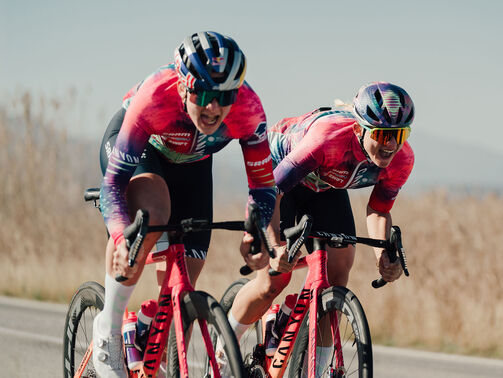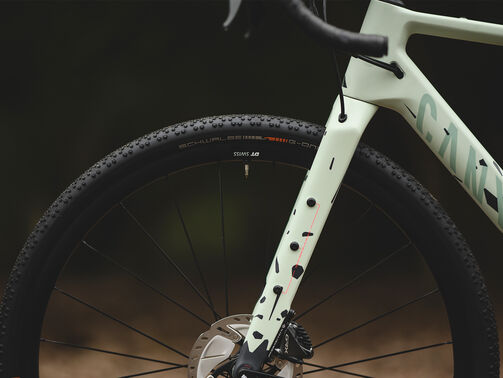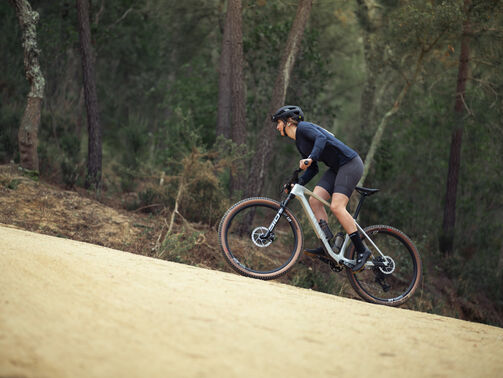How to choose a bike helmet: A buyer's guide to finding the perfect fit
There are so many helmets to choose from today, it’s hard to know what’s best for you and your riding style. So, we’ve put together a guide to make it easier to choose the right helmet for your needs.


It may not be mandatory to wear a helmet where you ride, but at Canyon we believe it's a good idea. In this guide, we’ll talk through the different types of helmets, the features, and how you can choose between the best cycling helmets for your riding style.
Understanding bike helmet safety standards
There are two main standards you may encounter when looking for a cycling helmet. EN 1078 is the most common standard and is seen on nearly all adult helmets sold in the UK and Europe. In the USA, cycling helmets must adhere to the Consumer Product Safety Commission’s CPSC 1203 standard.
For kids, the European standard is EN 1080, the difference being that it includes testing on quick-release systems.
These days, you can also find helmets that are tested to be suitable for electric bike riders. The NTA 8776 isn’t a mandatory standard, but helmets with this certification are better equipped to deal with higher speeds of e-bike riding.
Finding the right fit: Sizing and adjustments
A well-fitted helmet keeps you safer. If the straps are too loose, there’s a risk of the helmet sliding up and back and not protecting the front of the head, or tipping forward and leaving the back of your head exposed. If the helmet is simply too small and ends up perched on the very top of your head, it won’t be able to protect you properly.
Whether men and women need specific helmets is entirely individual – just like what kind of bike you ride, whether you feel like you’d benefit from a gender-specific helmet will depend on your physiology. Women tend to have smaller and more round heads than men, but everyone is different so just look for a helmet that fits securely and has enough adjustment rather than buying something simply because it says it’s gender specific.
Different types of helmets come with different levels of padding and comfort – a full-face mountain bike helmet has padding in different areas compared to a road cycling helmet. The best cycling helmets will offer different padding thickness options, which you can easily remove as they’re usually attached to the helmet with velcro.
Full-face helmets might offer different padding levels in the chin areas rather than on the top of the head. You’ll also find different helmets use different methods of fit and adjustment. Some even offer space for ponytails, so if you have long hair, it’s definitely worth checking you can wear your hair as you like before buying a helmet.
Reflectivity may be important if you often ride at night. Some helmets come with reflective strips so that you can be seen more easily in the dark. You’ll likely find features like this on urban or commuter helmets rather than mountain bike or road cycling helmets.
Some also offer compatibility with lights or other cycling accessories. If you want a lightweight way of boosting your visibility, a helmet light is a great option. Some clip onto the rear fit system, and some helmets have specific mounting points that fit compatible lights or camera mounts onto them.
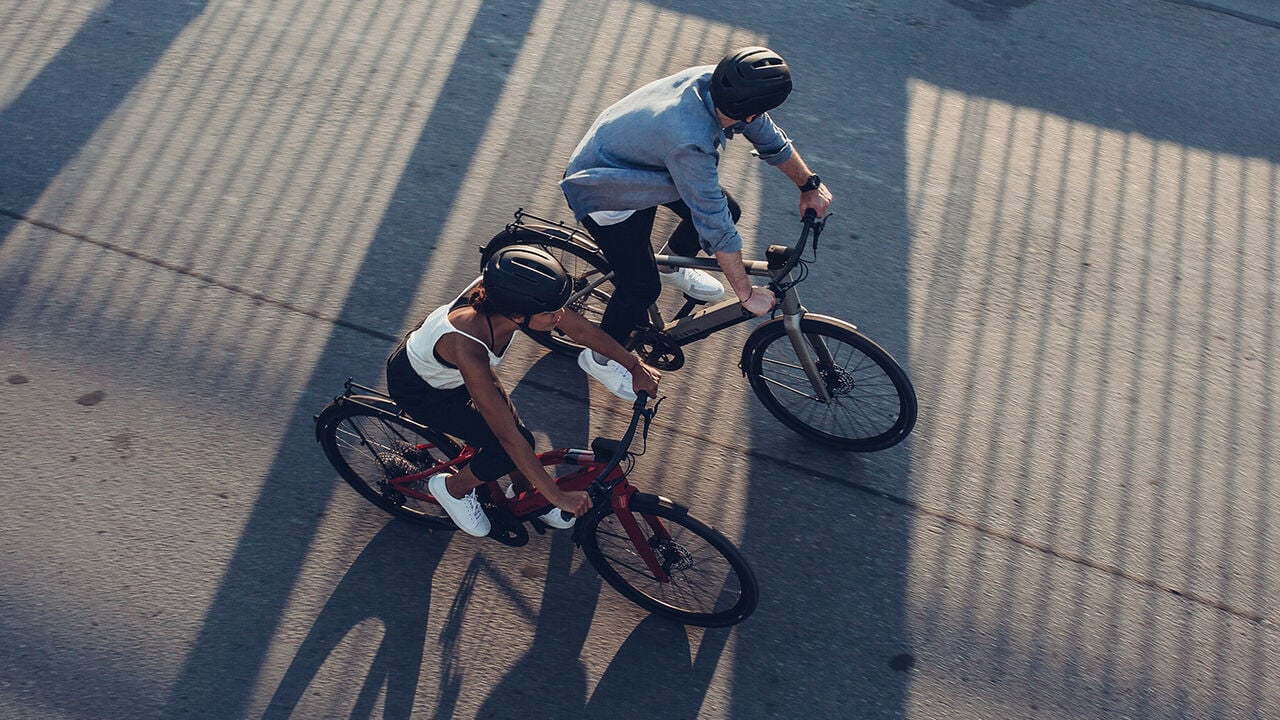
Exploring helmet features: Ventilation, weight, and visors
Helmets are clever bits of kit, and with modern advances in design, they’re now more comfortable and feature-rich than ever. Ventilation is key, as it keeps your head cool and stops sweat dripping into your eyes as you ride. The best cycling helmets will have carefully positioned vents which direct air flow through the helmet to keep you cool – this also means your goggles or sunglasses won’t steam up as easily!
Weight is also key – if you’re riding for hours, you’ll notice if a helmet is too heavy. There’s a reason you see downhill riders hanging their helmets off their bars when they’re climbing back up to the top of the run!
Another feature is the visor. They’re generally found on off-road helmets and some urban styles, and are great ways to keep the sun and rain out of your eyes. On the best cycling helmets for mountain bikers, you’ll find that the visors have a detachment system in case of a crash so that the impact to your head is dissipated more widely.
Evaluating helmet construction materials: Mips and other technologies
Modern helmets are incredibly effective at keeping you safe from low-speed crashes. This is partly due to the introduction of technologies like Mips®, which you’ll likely recognise from the little yellow sticker that adorns helmets that use the technology.
Essentially, Mips® works to reduce the rotational motion of the brain if you crash. This poses a bigger risk to brain injury than direct impacts, and so the system works to dissipate the energy from the crash.
Mips® is perhaps the most well-known technology, but there are others, and independent testing facilities that give out scores based on the effectiveness of the helmet in various scenarios.
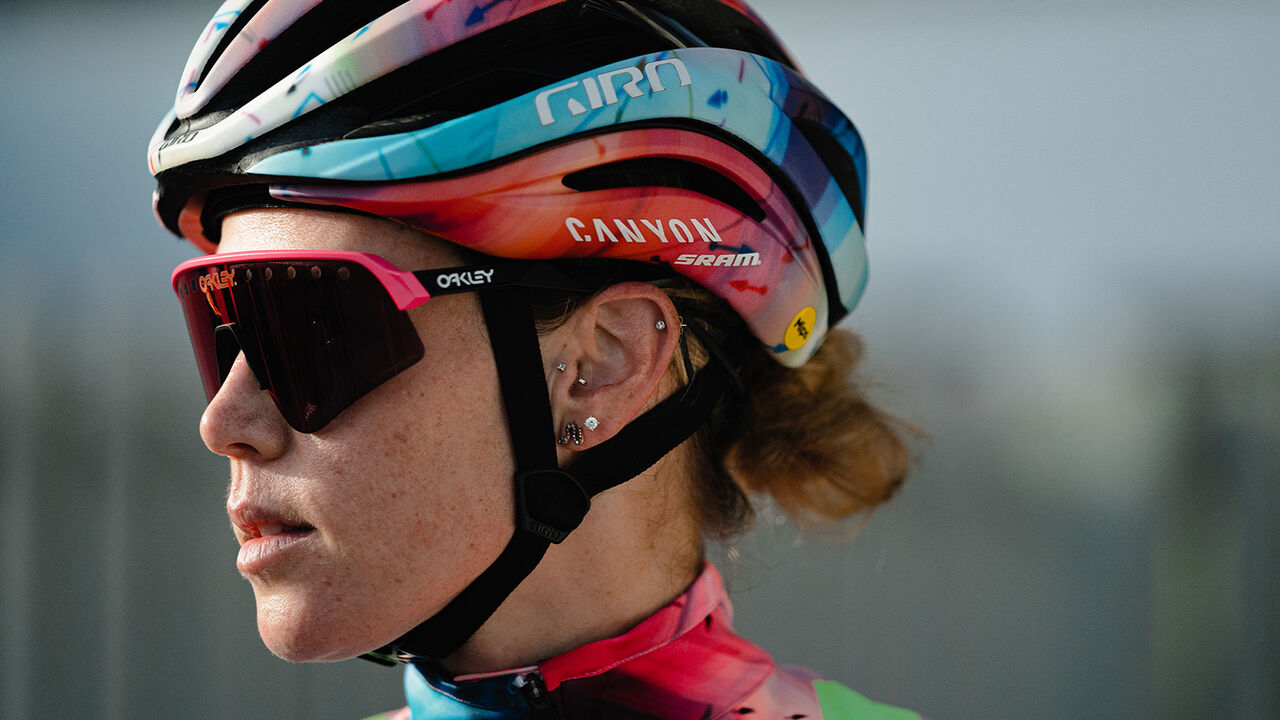
Choosing the best helmet for your riding style
Road bike helmets are often more light weight with plenty of vents to keep you cool. They can be cheaper or pricey, depending on the features, aerodymamics, and weight. Some are designed to be more aerodynamic, and some focus on lighter weight, with more vents and less excess material.
Hybrid and city bike helmets often have a rounder appearance, with fewer vents than a road bike helmet. They’re generally a bit cheaper than road bike helmets and sometimes come with a small visor or peak. They may also have attachments for lights.
Mountain biking encompasses various disciplines, so there are plenty of different types of helmets to choose from. Electric mountain bike riders should look for the NTA 8776 certification to be sure the helmet can take on the demands of e-biking.
BMX and dirt jump helmets look a lot like skating or horse riding helmets. They’re generally rounder and less vented than other mountain bike helmets.
Downhill riders use full-face helmets, as these offer the best protection. Enduro riders may use full-face or for more tame trails, a high-quality open-face helmet. You can now buy MTB helmets with removable chin guards if you want the best of both worlds.
Cross-country helmets may look similar to road bike or gravel helmets, particularly if you’re looking at those aimed at racers. For the more casual user, however, expect Mips® technology and more coverage towards the back of your head than a road helmet.

